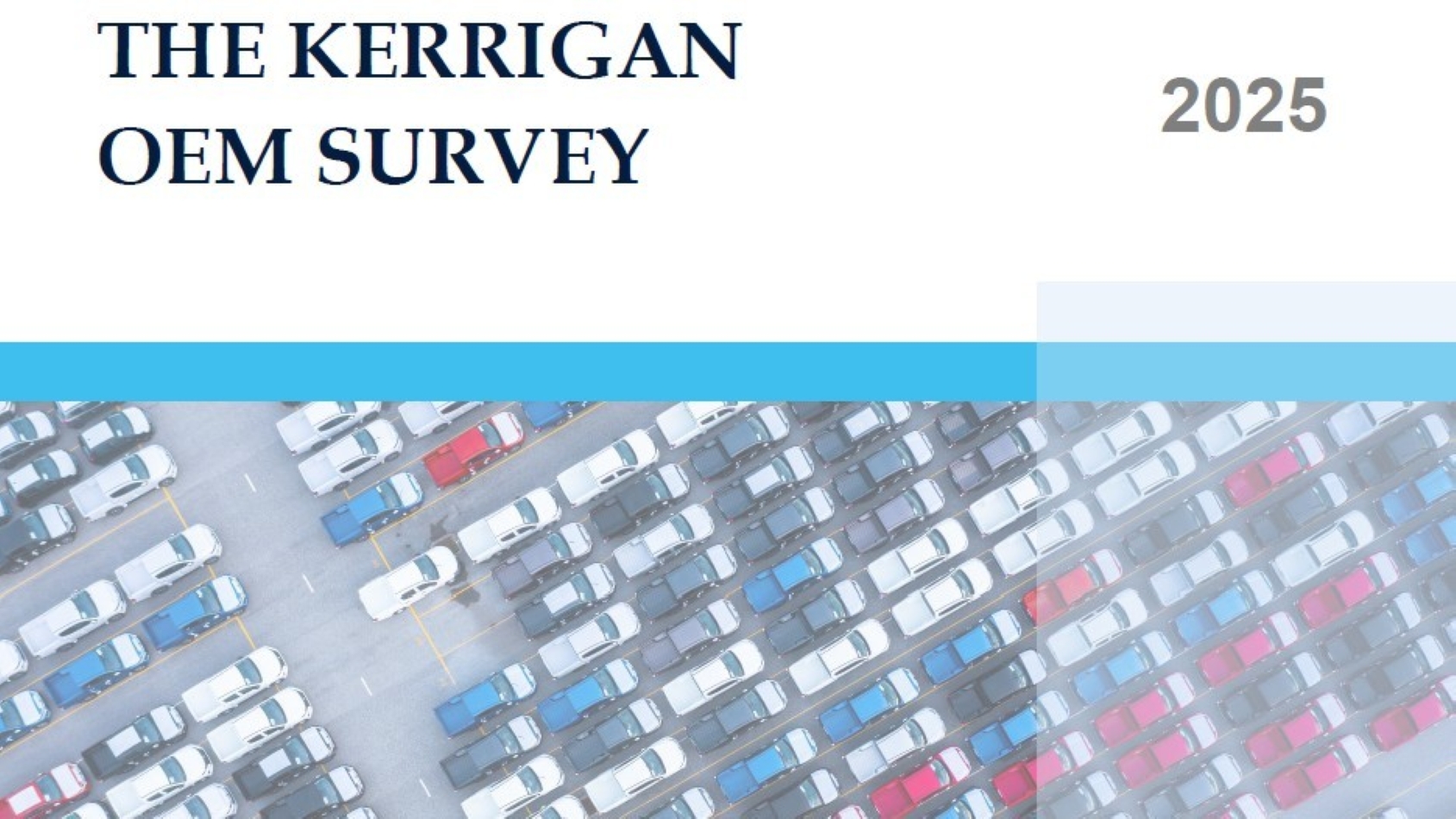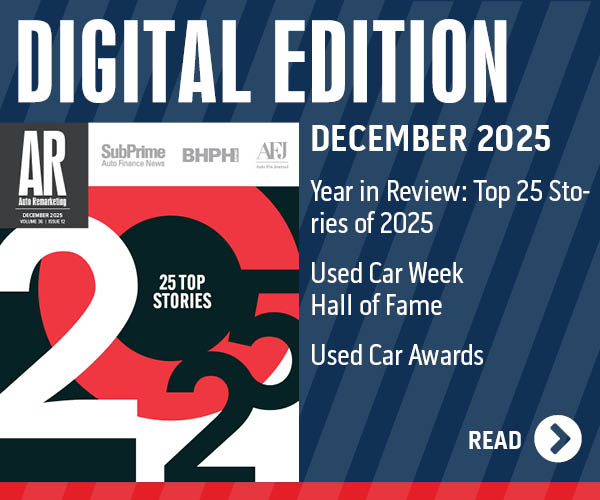Survey finds automakers’ expectations for sales fall while profit projections rise

Image courtesy of Kerrigan Advisors.
By subscribing, you agree to receive communications from Auto Remarketing and our partners in accordance with our Privacy Policy. We may share your information with select partners and sponsors who may contact you about their products and services. You may unsubscribe at any time.
Automakers’ sales expectations for 2025 are lower than the previous year’s, according to a survey conducted by dealership advisory firm Kerrigan Advisors.
The Kerrigan OEM Survey 2025, which queried 100 OEM executives from December 2024 to March 2025, showed a significant jump in the number of respondents expecting new-vehicle sales to drop this year.
While 36% said they believe sales will increase, that’s down eight percentage points from the 2024 survey. Meanwhile, the percentage who anticipate a decrease in sales rose from 8% last year to 18% in 2025.
The OEMs are also thinking their dealers’ inventory will be sitting on the lot for awhile, with 63% projecting 60 to 90 days’ supply in the next 12 months and 10% expecting more than 90 days’ supply.
But when it comes to profits, the view was much different. OEM sentiment completely flipped from negative to positive, with 66% projecting dealership earnings to remain stable or increase — a huge leap from the 46% who felt that way a year earlier — and just 34% forecasting a decrease, a corresponding 20-point drop from 2024.
The survey found 52% expect gross margin to “normalize” well above pre-pandemic levels, with 10% of those saying it will end up more than 25% over the norm from before COVID.
Subscribe to Auto Remarketing to stay informed and stay ahead.
By subscribing, you agree to receive communications from Auto Remarketing and our partners in accordance with our Privacy Policy. We may share your information with select partners and sponsors who may contact you about their products and services. You may unsubscribe at any time.
OEM executives’ view of franchise blue-sky values were also up year-over-year, with 78% expecting them to stay the same or rise, a 10 percentage-point increase.
The Kerrigan report said the “mixed sentiment” is likely the result a growing divide between the haves and have-nots when it comes to brands, while the lower sales expectations “may also be an indication of the OEMs’ larger expected burden when tariffs settle out.”
In other findings, a significant one-third of the OEMs surveyed are looking to have fewer dealers in their network in the next five years while just 14% are expecting their network to grow in that span. And 28% said they anticipate using their right of first refusal on more than 25% of their brand’s dealership buy-sell transactions.
The report said that “desire for increased control over their dealer networks” also shows up in OEM facility requirements, with 25% projecting an increase in those requirements and 67% saying they’ll remain the same, while a mere 8% expect to lower those requirements, down from 22% in the 2024 survey.
Kerrigan Advisors said the rising number of dealers deciding to sell in 2025 “is in part due to the costs of OEM-required facility upgrades, which often require a long investment horizon to justify.”
But the OEMs did concede that dealers will be managing their customer relationships and data during the next five years. More than 90% said that will be owned by either the dealers along (18%) or a collaboration between dealers and the OEM (74%), while 8% said the OEM will be the exclusive owner of the customer relationship in the future, an 11-percentage point decline from last year’s survey.
OEMs see the electric vehicle market growing, though not as quickly as they originally thought, with 80% saying the market’s transition to EVs is going slower than they had planned. But 10% disagreed, saying it’s gone faster than expected — up from 4% in 2024. And 60% expect the EV market share to surpass 10% by the end of 2025 and 14% project it to be greater than 20%.
The Kerrigan survey also asked OEM executives about the looming presence of China in the automotive market, noting that China currently owns more than 40% of the global automotive production capacity, compared to 10% for the U.S. The result showed 70% of the respondents said they’re concerned about the financial implications of Chinese OEM’s rising global market share, and 76% believe Chinese OEMs will enter the U.S. market in the future.


